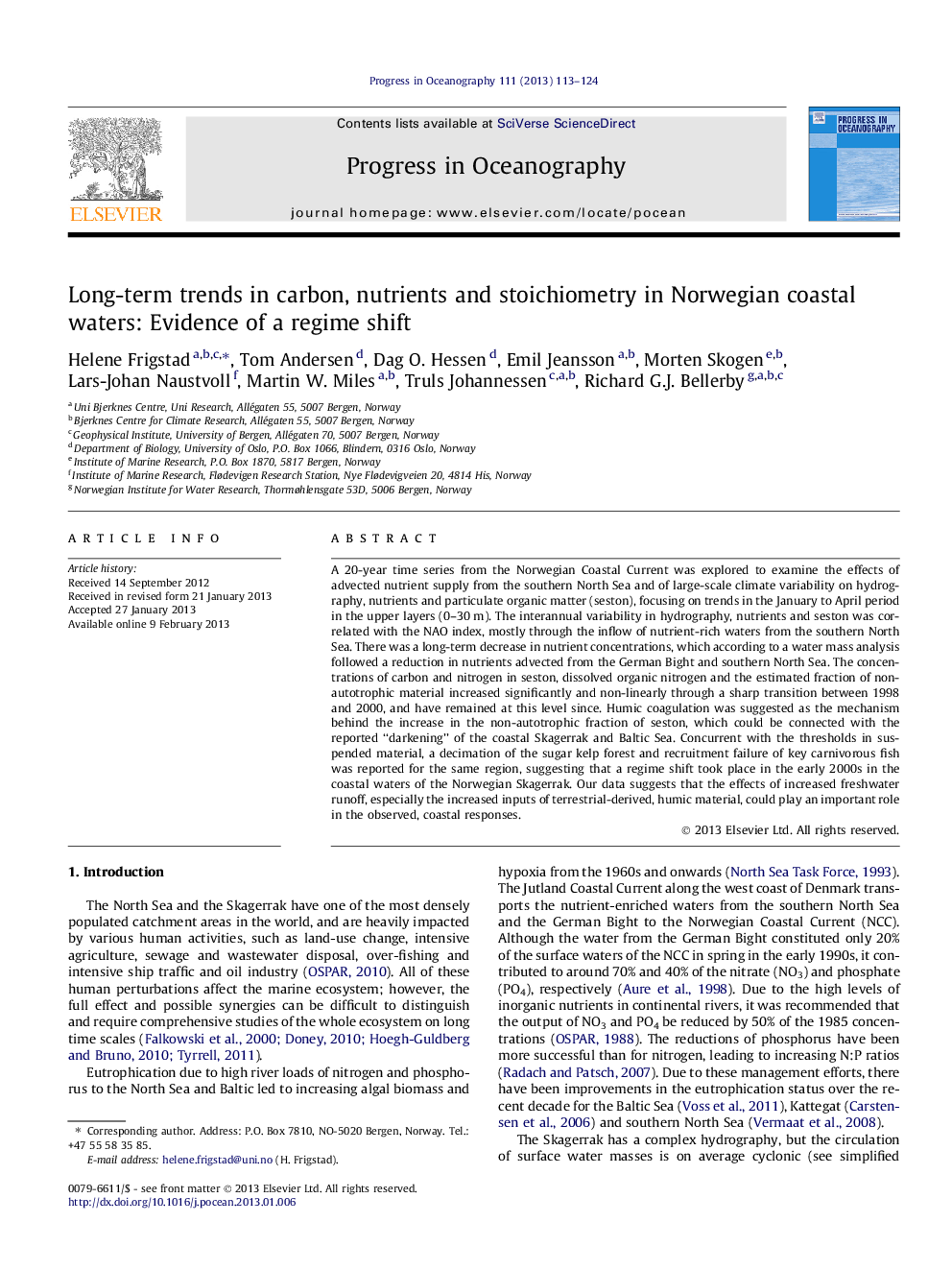| Article ID | Journal | Published Year | Pages | File Type |
|---|---|---|---|---|
| 4553184 | Progress in Oceanography | 2013 | 12 Pages |
A 20-year time series from the Norwegian Coastal Current was explored to examine the effects of advected nutrient supply from the southern North Sea and of large-scale climate variability on hydrography, nutrients and particulate organic matter (seston), focusing on trends in the January to April period in the upper layers (0–30 m). The interannual variability in hydrography, nutrients and seston was correlated with the NAO index, mostly through the inflow of nutrient-rich waters from the southern North Sea. There was a long-term decrease in nutrient concentrations, which according to a water mass analysis followed a reduction in nutrients advected from the German Bight and southern North Sea. The concentrations of carbon and nitrogen in seston, dissolved organic nitrogen and the estimated fraction of non-autotrophic material increased significantly and non-linearly through a sharp transition between 1998 and 2000, and have remained at this level since. Humic coagulation was suggested as the mechanism behind the increase in the non-autotrophic fraction of seston, which could be connected with the reported “darkening” of the coastal Skagerrak and Baltic Sea. Concurrent with the thresholds in suspended material, a decimation of the sugar kelp forest and recruitment failure of key carnivorous fish was reported for the same region, suggesting that a regime shift took place in the early 2000s in the coastal waters of the Norwegian Skagerrak. Our data suggests that the effects of increased freshwater runoff, especially the increased inputs of terrestrial-derived, humic material, could play an important role in the observed, coastal responses.
► Analyses 20-year time series to document long-term changes in Norwegian Coastal Current. ► Interannual variability correlated with NAO and inflow from southern North Sea. ► Long-term reduction in nutrients caused by lower concentrations in southern North Sea. ► Abrupt upward shift in seston, DON and non-autotrophic material between 1998 and 2000. ► Concurrent biological shifts indicate regime shift occurred in early 2000s.
